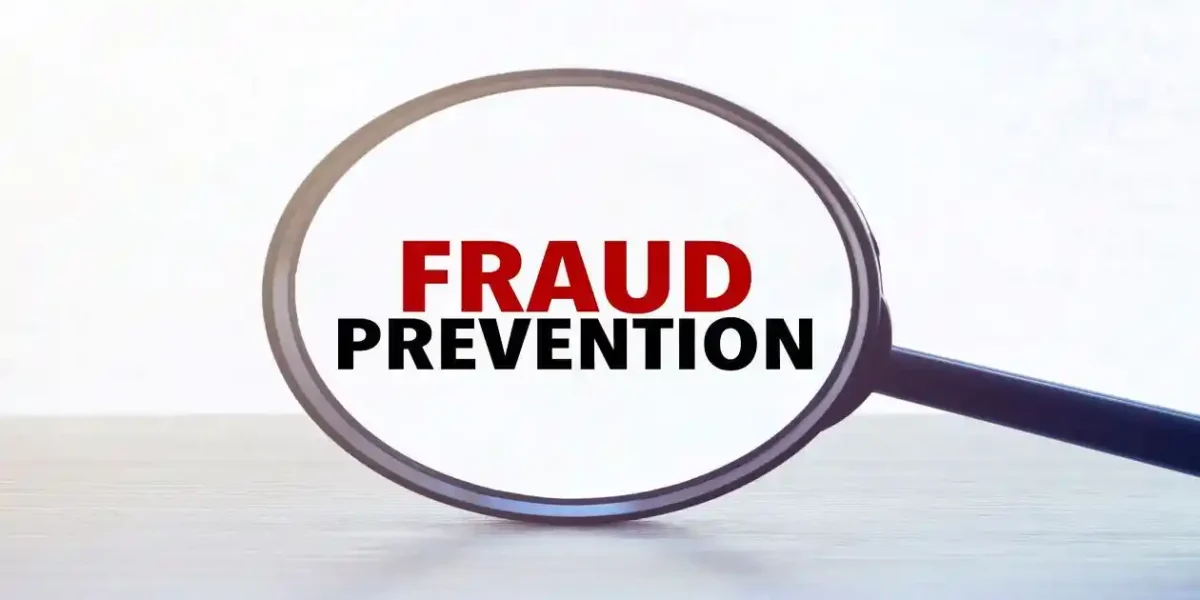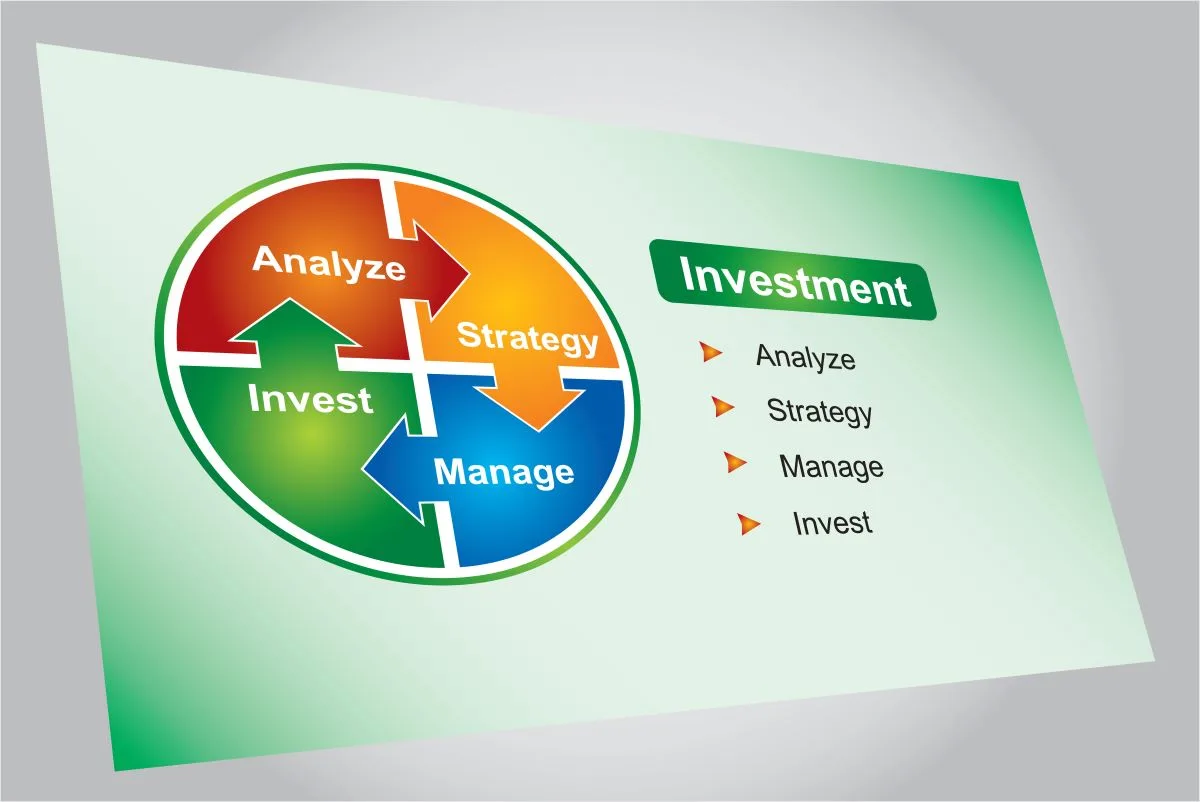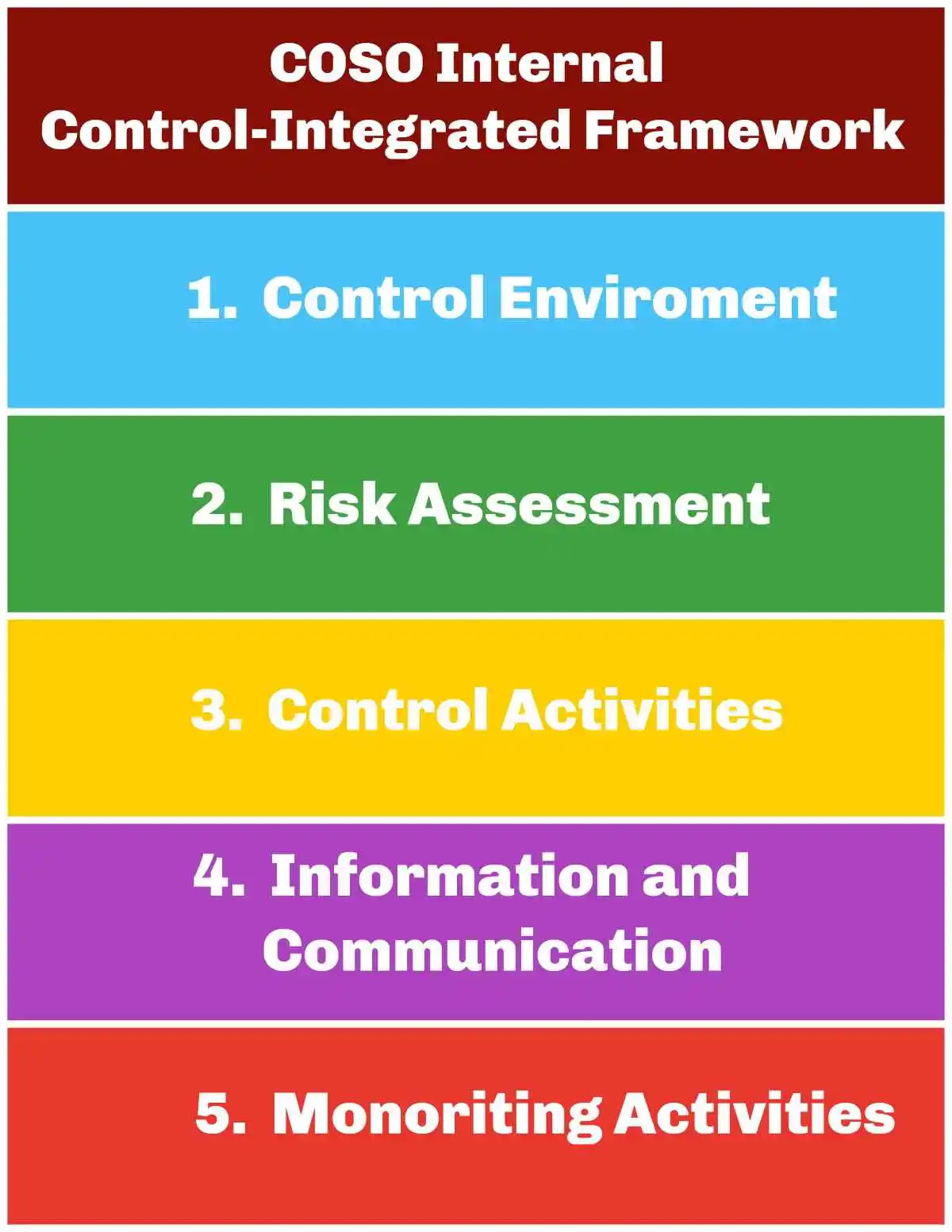Introduction to How to Spot Accounting Fraud
- How to Spot Accounting Fraud: Is a topic we will comprehensive break down step-by-step in this comprehensive guide on proven methods that actually work in spotting accounting fraud.
- Accounting Fraud Statistics: Reveal alarming patterns that directly threaten investor portfolios and market stability. Research demonstrates that 41% of companies commit accounting violations annually, while 10% of large public corporations engage in the more serious offense of securities fraud each year.
- Financial Devastation: Organizations lose approximately 5% of annual revenue to accounting fraud—with median losses reaching $125,000 per incident. These fraudulent schemes typically remain undetected for 14 months on average, generating monthly losses of approximately $8,300.
- Market Integrity Crisis: Financial statement fraud represents a fundamental threat to investors, companies, and overall market confidence. Despite extensive regulatory compliance requirements, researchers have identified that roughly half of all US financial statements contain misrepresentations more serious than simple clerical errors.
- Pressure Creates Fraud Risk: The likelihood of fraudulent accounting increases substantially when companies face intense pressure to meet specific financial objectives. This pressure creates the perfect environment for the deceptive practices that trigger securities class action lawsuits and destroy shareholder value.
- Essential Investor Protection: Understanding accounting fraud detection techniques becomes critical for protecting investment portfolios and preventing catastrophic financial losses. Investors, board members, and financial professionals who recognize warning signs of potential accounting violations can identify problems before they escalate into devastating securities litigation.
- Proven Detection Methods: This guide examines verified strategies that effectively identify accounting fraud, from recognizing sophisticated manipulation techniques to implementing robust internal controls. These detection methods provide essential safeguards for protecting financial interests while contributing to transparent capital markets that benefit all participants.
Understanding Accounting Fraud: Essential Definitions for Protecting Investment Portfolios
- Accounting fraud represents deliberate deception designed to mislead stakeholders about an organization’s true financial condition.
- Fundamental Concepts: Understanding these fundamental concepts provides the foundation for identifying accounting violations that can trigger devastating securities litigation and destroy investor confidence.
Defining Accounting Fraud: Intentional Deception vs. Honest Mistakes
- Accounting fraud occurs when individuals or organizations intentionally manipulate financial records to create false impressions of financial health. These deliberate actions target investors, regulators, and other stakeholders with sophisticated deception designed to conceal organizational problems and inflate apparent performance.
- Authoritative Definition: Accounting fraud specifically encompasses intentional acts resulting in material misstatements of financial statements. These calculated manipulations typically manifest through two primary categories:
- Fraudulent Financial Reporting: Involves intentional misstatements or omissions designed to deceive financial statement users. Key methods include:
- Manipulation or falsification of accounting records to hide true financial performance
- Misrepresentation in financial statements that creates false investor confidence
- Intentional omission of significant transactions that would reveal organizational problems
- Deliberate misapplication of accounting principles to inflate reported results
- Asset Misappropriation: Sometimes termed theft or defalcation, this involves stealing company assets while manipulating financial statements to conceal the theft. Examples include embezzlement schemes and forcing organizations to pay for goods or services never received.
- Widespread Problem: Research indicates that approximately 41% of companies misrepresent their financial reports annually, excluding simple clerical errors. Even more concerning, accounting fraud typically remains undetected in most cases, with approximately two-thirds of corporate fraud instances going undiscovered.
Critical Distinction: Accounting Errors vs. Deliberate Fraud
- Intent Determines Fraud: The fundamental difference between accounting errors and accounting fraud centers entirely on intent—a distinction crucial for legal proceedings and securities litigation.
- Unintentional Mistakes: Accounting errors represent unintentional mistakes during financial reporting processes. These might include mathematical miscalculations, misapplication of accounting standards without deceptive intent, or simple oversight in recording transactions. Errors lack the deliberate deception element that characterizes fraud.
- Deliberate Manipulation: Accounting fraud involves intentional actions specifically designed to mislead stakeholders. Auditing standards emphasize that the critical factor distinguishing fraud from error centers on whether the underlying action causing the misstatement was intentional or unintentional. The dollar amount does not determine fraud qualification—even immaterial intentional misstatements constitute accounting fraud.
- The Fraud Triangle: Three conditions typically align when accounting fraud occurs:
- Incentive or Pressure: Providing motivation for fraudulent behavior
- Opportunity: Created through weak internal controls or management override capabilities
- Rationalization: Mental justification of fraudulent actions
- Management Risk: Management possesses unique capabilities to perpetrate accounting fraud due to their positions enabling direct or indirect manipulation of accounting records. This factor makes management-level fraud particularly dangerous and challenging to detect before it triggers securities class action lawsuits.
Devastating Consequences: Legal and Financial Ramifications
Accounting fraud: Consequences extend far beyond simple financial statement corrections, creating cascading effects that can permanently damage organizations and destroy stakeholder value.
- Massive Financial Penalties: Companies committing accounting fraud face substantial financial penalties reflecting the scope of their deception. These penalties can reach hundreds of millions of dollars in severe cases. Individuals involved face personal fines, imprisonment, probation, and permanent bans from future fiduciary roles.
- Employee Devastation: Studies combining U.S. Census data with SEC enforcement actions reveal that employees at fraudulent companies lose approximately 50% of cumulative annual wages compared to employees at matched sample companies. Low-wage employees experience particularly severe wage consequences despite being unlikely perpetrators of the fraud.
- Capital Market Effects: Accounting fraud revelations trigger severe adverse outcomes across capital markets:
- Immediate negative stock price reactions that destroy shareholder value
- Executive and director turnover creating organizational instability
- Lasting reputational damage affecting future business prospects
- Increased future stock price crash risk that persists for years
- Complete Organizational Destruction: Many companies cannot survive accounting fraud revelations as investors and creditors lose confidence and withdraw support. The artificial financial health created through fraudulent reporting proves unsustainable when truth emerges.
- Industry-Wide Impact: The Association of Certified Fraud Examiners reports that the average organization loses about 5% of its revenues annually due to fraud. This substantial financial impact, combined with severe legal consequences and the potential for securities litigation, makes understanding and detecting accounting fraud essential for protecting all stakeholder interests.
Sophisticated Fraud Schemes: The Foundation of Securities Class Action Lawsuits
- Financial statement manipulation: Encompasses several distinct deceptive practices, each designed to create false impressions of organizational health and trigger the devastating securities litigation that follows their eventual discovery.
- Sophisticated Schemes: Understanding these sophisticated accounting fraud patterns empowers stakeholders to identify potential violations before they escalate into catastrophic financial disasters and costly securities class action lawsuits.
Revenue Recognition Fraud: The Primary Catalyst for Securities Cases
- Revenue manipulation: Remains the most prevalent form of accounting fraud that triggers securities litigation.
- Prematurely Recording Sales: Companies engaging in these schemes frequently record sales prematurely—before fulfilling service obligations or completing product delivery. This deceptive practice creates artificial performance boosts that mislead investors about actual business health.
- Common Revenue Manipulation Techniques:
- Premature Revenue Recognition: Recording sales before completing all service requirements or prior to product shipment, creating false impressions of growth that cannot be sustained.
- Bill and Hold Arrangements: Billing customers while deliberately delaying product delivery but immediately recording revenue, artificially inflating current-period performance.
- Channel Stuffing Operations: Shipping excessive inventory to distributors who cannot sell the products, then recording these shipments as legitimate completed sales.
- Fictitious Revenue Creation: Fabricating sales transactions that never occurred, often through shell companies or related-party arrangements.
- Accounting Misclassification: Recording payments from suppliers as revenue instead of treating them as expense reductions, simultaneously inflating reported revenue and profit margins.
Expense Manipulation: Concealing True Operating Costs
- Expense Manipulation: Creates equally dangerous exposure to securities class action lawsuits through systematic misrepresentation of operating costs.
- Deliberate Acts: Organizations engaging in these practices deliberately defer current-period expenses to future periods, creating temporary improvements in reported profitability that ultimately require increasingly aggressive manipulations to maintain.
- Sophisticated Expense Concealment Methods: Companies fail to accrue expenses for services already consumed but not yet billed. Management improperly capitalizes routine operating expenses instead of recording them as current-period costs.
- False Positive Positives: Organizations maintain certain liabilities “off the books,” creating falsely positive financial presentations. Companies manipulate accounting assumptions to reduce apparent liability amounts. Management refuses to write down or write off impaired assets.
Asset Valuation Manipulation: Inflating Balance Sheet Strength
- Asset misrepresentation occurs when organizations intentionally present incorrect valuations of company assets, typically involving overstatement of asset values on balance sheets. These schemes target areas where management exercises significant discretion in valuation judgments.
- Valuation Errors: Companies fail to apply appropriate valuation reserves and ignore required depreciation schedules. Management inappropriately capitalizes normal operating costs by moving them from income statements to balance sheets. Organizations systematically overvalue inventory or accounts receivable to enhance apparent financial strength.
Asset and Revenue Inflation: Creating False Growth Impressions
- Asset inflation: Employs specific techniques designed to create deceptive impressions of organizational growth and stability. Companies under financial pressure inflate asset values on balance sheets or recognize revenue prematurely to appear more financially robust.
- Complex Bundling Schemes: Organizations bundle equipment sales with service contracts, then improperly recognize substantial revenue portions upfront rather than over entire contract terms. Companies mischaracterize transaction types—recording hardware sales as higher-margin software sales to appear more profitable.
Material Omissions: When Silence Becomes Securities Fraud
- Improper Disclosure Fraud: Represents the most insidious form of deception because it creates violations that appear unintentional on the surface. Organizations engaging in omission fraud withhold material information from financial statements, including failure to disclose important financial information, misrepresenting financial arrangements to conceal risks, and omitting related-party transactions.
- Critical Omission Examples: Companies deliberately conceal subsequent events that impact organizational financial position. Facility contamination requiring costly remediation might be omitted from disclosures. Organizations hide off-balance sheet transactions, related-party dealings, and changes in accounting policies.
- Deliberate Documentation Destruction: Management instructs staff to omit required disclosures from financial statements or destroy documentation related to negative events. Proper disclosure remains required under accounting standards for events providing additional evidence about conditions existing at balance sheet dates.
- Securities Litigation Consequences: When these sophisticated manipulation schemes are eventually discovered—often through whistleblower reports or regulatory enforcement investigations—the resulting corrective disclosures trigger dramatic stock price declines and inevitable securities class action lawsuits seeking billions in investor damages.
Red Flags and Warning Signs: Detecting Accounting Fraud Before Catastrophic Investor Losses
- Detection Requires Vigilance: Accounting fraud detection demands systematic attention to specific warning patterns that consistently appear before major corporate scandals and the devastating securities class action lawsuits that follow.
- Proven Indicators: Experienced auditors, investors, and financial professionals rely on these proven indicators to identify manipulation before it destroys shareholder value.
Quarter-End Revenue Anomalies: The Most Reliable Fraud Indicator
- End-of-Period Revenue Spikes: Quarter-end revenue anomalies represent one of the most reliable indicators of potential financial statement fraud.
- Creating Artificial Revenue: Organizations engaging in fraudulent activities frequently report significant sales increases just before reporting periods close, creating artificial revenue patterns that alert investors can identify.
- Sales Above Normal Patterns: Revenue that suddenly appears well above historical norms or unexpectedly exceeds projections potentially indicates questionable accounting practices occurring behind the scenes.
- Year End Period: These end-of-period spikes deserve immediate scrutiny since legitimate business transactions typically distribute more evenly throughout reporting periods.
- Professional Detection Methods: The Association of Certified Fraud Examiners recommends that fraud professionals compare revenue reported monthly during current periods with earlier, comparable periods. Complex transactions completed just before reporting deadlines merit extra attention, particularly those involving related parties.
- Industry Performance Discrepancies: Warning signs become more concerning when organizations operating in struggling industries somehow avoid negative impacts affecting competitors. Unusual fourth-quarter trends warrant thorough investigation as they often reveal deliberate manipulation of financial results designed to trigger securities litigation when discovered.
Discrepancy Between Cash Flow and Reported Income: The Ultimate Truth Test
- Cash Flow Reveals Truth: The relationship between reported profits and actual cash generation represents perhaps the most telling indicator of potential accounting fraud. Companies consistently reporting profits while struggling to generate cash signal earnings manipulation that frequently leads to securities class action lawsuits.
- Experts Emphasize Disconnect: Financial experts emphasize that net income consistently and significantly exceeding cash from operations suggests aggressive or fraudulent accounting practices. This disconnect typically stems from accounting issues related to timing differences between when revenues and expenses are recognized versus when cash actually moves.
- Critical Analysis Required: Corporate Finance Institute notes that net income consistently exceeding operating cash flow serves as a significant red flag requiring immediate investigation. Investors should remember that constant cash generation represents a more important indicator of company viability than reported net income alone.
Reversals of Revenue in the Next Period: Evidence of Phantom Sales
- Definitive Fraud Indicator: Revenue transactions that reverse immediately following reporting periods provide definitive evidence of accounting fraud. Thomson Reuters highlights this pattern, noting that reversals of revenue transactions at the beginning of following years—through returns, discounts, or other adjustments—represent clear warning signs.
- Phantom Sales Evidence: These reversals often indicate transactions that were prematurely recorded or entirely fabricated. Fraud professionals investigating such cases typically examine reversed sales in subsequent periods as potential evidence of phantom sales. Auditors must remain vigilant about revenue recognition anomalies, including unusual timing of revenue recognition or recording sales before delivery completion.
- Revenue Acceleration Schemes: This practice directly relates to fraudulent acceleration of revenue—effectively “pulling forward” future sales into current periods to create illusions of better performance. During challenging market conditions, these improper activities often become exposed as current year sales and profits become unavailable to mask prior year misconduct.
Behavioral Warning Signs: Personal Conduct That Signals Fraud Risk
- Employee Behavior Insights: Employee behavior provides crucial insights into potential accounting fraud beyond financial statement analysis. The Association of Certified Fraud Examiners found that perpetrators often display specific behavioral red flags before their fraudulent actions are discovered.
- Most Common Behavioral Indicators:
- Living Beyond Known Means: Employees displaying wealth inconsistent with their known income represent 39% of fraud cases
- Personal Financial Difficulties: Financial problems driving individuals toward fraudulent behavior account for 25% of cases
- Unusual Vendor Relationships: Unusually close relationships with vendors or customers appear in 20% of fraud situations
- Excessive Control Issues: Unwillingness to share duties and controlling behavior characterizes 13% of fraud perpetrators
- Operational Red Flags: Employees suddenly safeguarding their work, refusing to participate in audits, or becoming controlling of operations warrant closer monitoring. Other suspicious behaviors include reluctance to provide information to investigators, continuous borrowing from co-workers, and providing unreasonable responses to reasonable questions.
- Additional Warning Patterns: Behavioral changes indicating substance abuse, gambling problems, or fear of losing employment also deserve attention. Purchasing agents who pick up vendor payments rather than having them mailed present another concerning pattern that might signal fraudulent activity.
- Systematic Detection: These warning signs provide essential early detection capabilities that help investors and organizations identify potential accounting fraud before it escalates into costly securities litigation and devastating financial losses.
Understanding Fraud Catalysts: Root Causes That Create Securities Litigation Risk
- Fraud Prevention Success: Requires thorough understanding of the underlying conditions that create accounting fraud opportunities.
- Motivation: The motivations and circumstances that lead to fraudulent activities follow predictable patterns that, once recognized, enable organizations to implement targeted defenses against securities class action lawsuits.
Financial Pressure and Unrealistic Performance Demands
- Primary Fraud Driver: Financial pressure serves as the fundamental catalyst for accounting fraud across organizations of all sizes.
- Beat-the-Street: Companies experience intense pressure to meet financial targets from both internal management and external stakeholders.
- Economy Factor: During economic downturns, this pressure intensifies dramatically—49.1% of fraud experts cite increased financial pressure as the primary factor contributing to fraud during economic crises.
- External Pressures: Create compelling incentives for fraudulent conduct:
- Analyst Expectations: Demands from analysts and investors to meet or exceed quarterly projections
- Credit Obligations: Pressure to maintain financial results that avoid loan covenant violations
- Competitive Performance: Requirements to outperform competitors in challenging market conditions
- Executive Motivations: Individual-level pressures drive executives toward financial manipulation to earn performance-based bonuses or preserve personal wealth tied to stock options. While greed remains a significant factor in many accounting scandals, fraudulent schemes sometimes emerge simply from desperate attempts to protect a company’s apparent solvency.
Weak Internal Controls Create Fraud Opportunities
Control Deficiencies: Represent the opportunity component of fraudulent activities. Research demonstrates that inadequate controls contributed to 61% of reported frauds. The Association of Certified Fraud Examiners found that insufficient internal controls enabled half of all fraud cases.
Fraud opportunities expand when:
Staff Reductions: Companies reduce personnel who previously performed essential control functions
Restructuring Damage: Organizational changes eliminate or weaken established control mechanisms
Complex Transactions: Sophisticated accounting arrangements create manipulation opportunities
Control Overrides: Even well-designed controls cannot eliminate fraud risk entirely. Determined fraudsters disregard existing controls 21% of the time, while 16% collaborate to circumvent protective measures. Layoffs increase this risk significantly—35% of organizations experiencing workforce reductions report elimination of some controls.
Poor Corporate Governance Enables Fraudulent Environments
- Governance Failures: Create environments where accounting fraud flourishes without adequate oversight. Effective corporate governance serves as a critical deterrent by establishing vigilant monitoring systems that eliminate abuse opportunities.
- Common governance breakdowns include:
- Board Independence Issues: Inadequate oversight resulting from conflicts of interest or insufficient independence
- Power Concentration: Excessive authority consolidation, particularly when CEO and board chair roles remain combined
- Audit Committee Conflicts: Compromised oversight when committee members have competing interests
- Governance Research: Indicates that diverse boards correlate negatively with corporate violations, though certain governance mechanisms like board independence may not consistently prevent misconduct.

Ethical Culture Deficiencies: The Foundation of Fraud Risk
- Cultural Weakness: The absence of strong ethical frameworks represents the most fundamental accounting fraud risk factor. Organizations focusing exclusively on regulatory compliance without fostering genuine ethical values remain particularly vulnerable to fraudulent schemes. This deficiency enables employees to rationalize unethical behavior or feel justified engaging in misconduct.
- The Fraud Triangle: Combines opportunity, pressure, and rationalization—with all three elements typically present when fraud occurs. Rationalization becomes significantly easier in environments where unethical behavior appears normalized or rewarded.
- Ethical Crisis Statistics: Recent research reveals alarming patterns—55% of accounting professionals have witnessed unethical behavior during their careers, while 25% report experiencing pressure to act unethically themselves. Creating strong ethical environments with leadership that demonstrates unwavering commitment to integrity represents the fundamental defense against accounting fraud and resulting securities litigation.
Financial Statement Fraud Detection: Essential Methods That Protect Against Securities Litigation
- Systematic Fraud Detection: Requires sophisticated analytical approaches that extend far beyond casual financial statement review.
- Proven Methods: Professional investors and financial experts employ proven methodologies to uncover accounting irregularities that could trigger devastating securities class action lawsuits and substantial investment losses.
Financial Ratio Analysis and Trend Detection
- Ratio Analysis: Provides one of the most accessible yet powerful methods for identifying potential financial statement fraud. The leverage ratio, profitability ratio, asset composition, liquidity, and capital turnover ratios help evaluate financial statements for dangerous irregularities. Examining critical patterns within these ratios reveals underlying organizational problems while enabling informed investment decisions.
- Fraud Patterns: Organizations engaging in accounting fraudtypically exhibit unusual relationships among financial data. Healthy companies maintain consistent balance between assets and liabilities—unexpected deviations from historical norms often indicate deliberate manipulation. Sales should correspond proportionally with cost of goods sold; when these relationships become distorted, immediate investigation becomes warranted.
- Investment Protection: These analytical techniques provide essential early warning systems for detecting the deceptive practices that eventually trigger securities litigation and destroy shareholder value.
Advanced Analytics and Benford’s Law Detection
- Benford’s Law: Offers extraordinary capabilities for detecting numerical manipulation in financial statements. This mathematical principle demonstrates that in natural number sets, the digit “1” appears as the first digit approximately 30.1% of the time, with subsequent digits (2-9) appearing with decreasing frequency.
- Fraud Detection Application: This principle proves remarkably effective for analyzing accounting data. When fraudsters manually insert numbers into naturally occurring datasets, they typically fail to follow expected patterns. Forensic accountants examine expenditures, electronic funds transfers, and outgoing payments using this analytical framework.
- Practical Example: Companies with signing authority limits of $5,000 create opportunities for fraud when executives write checks for $4,999 to avoid additional approvals, generating unusual spikes in numbers beginning with “4”. Data mining techniques extract meaningful information from large datasets to identify these anomalies.
Journal Entry Testing and Adjustment Reviews
- Critical Audit Requirement: Journal entry testing remains mandatory in all audits because manipulating journal entries represents one of the simplest methods for committing accounting fraud. Auditors must understand entire journal entry processes by examining posting authorities, approval protocols, and unusual entry patterns.
- High-Risk Entry Categories:
- Nonstandard entries made at year-end, particularly involving round numbers
- Entries to seldom-used accounts without clear business purpose
- Post-closing entries lacking adequate explanation
- Entries made by individuals outside normal posting authority
- Securities Litigation Prevention: Thorough journal entry testing helps identify manipulation before it escalates into the material misstatements that trigger securities class action lawsuits.
Industry Benchmarking and Comparative Analysis
- Benchmarking Analysis: Comparing financial data against industry standards helps identify outliers that warrant immediate investigation. Analysis should include horizontal and vertical comparisons—examining relationships between financial statement items within reporting periods and analyzing percentage changes year-over-year.
- Research Validation: Empirical studies analyzing fraudulent versus non-fraudulent financial statements demonstrate that specific financial ratios serve as significant indicators for identifying financial reporting fraud. Benchmarking against industry standards exposes companies whose performance dramatically diverges from peers without legitimate operational explanations.
- Investor Due Diligence: This comparative approach provides investors with essential tools for identifying companies that may be engaging in the deceptive practices that eventually result inregulatory enforcement actions and securities litigation.
Internal Audit Programs and Risk Assessment
- Modern Internal Auditing: Has evolved from traditional compliance functions into proactive strategies for identifying fraud risk factors. Contemporary internal audit approaches include:
- Transaction monitoring systems to detect inconsistencies
- Anomaly detection using advanced data analytics
- Pattern recognition to identify suspicious behavioral changes
- Fraud Prevention Integration: Internal auditors should incorporate fraud risk assessment into every audit plan and engagement. When fraud occurs, internal audit must analyze control failures and identify improvement opportunities.
- Organizational Protection: Robust internal audit programs create multiple layers of defense against the accounting violations that can destroy corporate reputation and trigger costly securities litigation.
Prevention Strategies That Protect Against Securities Litigation
- Proactive Prevention: Organizations must implement systematic defenses against accounting fraudbefore deceptive practices escalate into devastating securities class action lawsuits. Companies that adopt comprehensive prevention strategies experience substantially better outcomes while protecting themselves from the catastrophic financial and legal consequences that destroy shareholder value.
Strengthening Internal Controls: The Foundation of Fraud Prevention
- Internal Controls: Serve as the primary defense against financial statement fraudand subsequent securities litigation. Organizations implementing robust preventive controls experience 50% reduction in fraud losses and significantly shorter fraud duration. These controls create multiple layers of protection that make fraudulent activities substantially more difficult to execute and conceal.
- Essential Control Components:
- Segregation of Duties: Prevents any single individual from controlling complete financial transactions, creating natural checkpoints that detect unauthorized activities.
- Physical Asset Safeguards: Limit access to company resources based on legitimate job requirements, reducing opportunities for asset misappropriation.
- Regular Reconciliations: Systematic comparison of recorded transactions with supporting documentation reveals discrepancies before they escalate into major fraud schemes.
Building Ethical Culture: Leadership-Driven Fraud Prevention
- Ethical Leadership: Creates organizational environments that resist the pressures leading to accounting violations and securities fraud. Organizations where executives demonstrate ethical behavior foster cultures that significantly reduce fraud risk while supporting regulatory compliance.
- Ethics Training Programs: Must explicitly connect daily decision-making with organizational values that prioritize transparency and financial integrity. Research reveals that 55% of accounting professionals have witnessed unethical behavior during their careers, emphasizing the critical importance of establishing clear ethics policies that prevent rationalization of fraudulent conduct.
Whistleblower Programs: Early Detection Systems
- Whistleblower Protection: Provides essential early warning mechanisms that detect potential accounting fraud before it triggers costly securities class action lawsuits. Organizations with effective whistleblower hotlines detect fraudulent activities significantly faster while experiencing lower median losses.
- SEC Whistleblower Program: Offers substantial monetary incentives ranging from 10-30% of sanctions exceeding $1 million, creating powerful incentives for employees to report suspicious activities. These programs serve as critical safeguards when traditional internal controls fail or are deliberately circumvented.
Audit Programs and Compliance Monitoring
- Systematic Monitoring: Through internal and external audits prevents the gradual deterioration of controls that creates opportunities for financial statement fraud. Effective audit programs provide vital information about internal control effectiveness while identifying weaknesses before they are exploited.
- Risk-Based Testing: Should focus resources on high-risk areas identified through comprehensive risk assessment matrices, ensuring that limited audit resources target the most significant threats to financial reporting integrity.
Technology-Enhanced Fraud Detection
- Advanced Analytics: Modern fraud prevention utilizes sophisticated technology to monitor transactions continuously, identifying patterns and anomalies that indicate potential manipulation. AI-powered detection tools can detect 62% more fraud while reducing false positive alerts by 73%.
- Operational Efficiency: Automation shifts analysts from routine monitoring tasks to strategic fraud investigation, simultaneously reducing operational costs while improving regulatory compliance operations. These technological solutions create comprehensive monitoring that human analysis alone cannot achieve.
- Strategic Prevention Framework: Companies that implement these multi-layered prevention strategies create robust defenses against the sophisticated deception schemes that trigger securities litigation while protecting investor confidence and market integrity.
Protecting Against Accounting Fraud: Essential Knowledge for Market Participants
- Accounting fraud represents a persistent threat across all business sectors, devastating organizations regardless of size or industry affiliation. This guide has provided essential insights into the sophisticated methods fraudsters employ to manipulate financial statements and the catastrophic consequences these deceptions create. Most critically, you now possess the analytical capabilities to identify warning signs before they result in significant investment losses.
- Detection Through Vigilance: Financial statement manipulation employs various sophisticated techniques, yet vigilant stakeholders can uncover these deceptions through systematic analysis. Unusual revenue patterns, discrepancies between reported income and cash flow, and suspicious behavioral changes serve as reliable indicators that warrant immediate investigation. Understanding the fraud triangle—opportunity, pressure, and rationalization—explains why seemingly trustworthy professionals sometimes engage in practices that trigger securities class action lawsuits.
- Prevention Exceeds Detection: Robust internal controls, when properly implemented, reduce fraud losses by half while creating multiple barriers against accounting violations. Whistleblower programs demonstrate extraordinary effectiveness, often identifying fraudulent activity before extensive damage occurs. Companies that prioritize ethical culture create additional shields against the misconduct that leads to securities litigation.
- Constant Vigilance Required: The battle against accounting fraud demands unwavering attention from all market participants. Financial professionals must remain alert to warning signs while organizations implement comprehensive preventive measures. Regular audits, benchmarking against industry standards, and advanced analytics tools provide powerful defenses against manipulation attempts that could trigger regulatory enforcement actions.
- Empowered Investor Protection: Armed with these proven detection and prevention strategies, you can better safeguard your investments and financial interests against the deceptive practices that undermine market integrity. Accounting fraud may persist as a threat, but knowledgeable stakeholders who recognize its warning signs significantly reduce their vulnerability to these damaging schemes.
- Market Integrity Depends on Knowledge: Your awareness serves as the first line of defense against those who would manipulate financial statements for personal gain, ultimately contributing to more transparent and trustworthy capital markets that benefit all participants.
Key Takeaways
Understanding how to spot accounting fraud is crucial for protecting investments and maintaining market integrity, as 41% of companies commit accounting violations annually with median losses of $125,000.
• Watch for quarter-end revenue spikes and cash flow discrepancies – Unusual sales increases before reporting periods and consistent gaps between reported profits and actual cash flow signal potential manipulation.
• Apply Benford’s Law and ratio analysis to detect anomalies – Natural number patterns and financial ratio comparisons against industry benchmarks reveal irregularities that warrant investigation.
• Implement strong internal controls and whistleblower programs – Organizations with robust preventive controls experience 50% reduction in fraud losses, while hotlines detect fraud faster with lower median losses.
• Monitor behavioral red flags like excessive secrecy or lavish lifestyles – Employees living beyond their means (39% of cases) or displaying unusual control over operations often indicate fraudulent activity.
• Focus on journal entry testing and revenue reversals – Nonstandard year-end entries and transactions that reverse in subsequent periods represent clear warning signs of financial statement manipulation.
The key to effective fraud prevention lies in combining systematic financial analysis with strong organizational controls and ethical culture, creating multiple layers of protection against accounting deception.
FAQs
Q1. What are the most common types of accounting fraud? The most common types include overstating revenue, understating expenses or liabilities, misrepresenting assets, inflating assets or revenue, and making improper disclosures or omissions in financial statements.
Q2. How can I spot potential accounting fraud in financial statements? Look for unusual revenue spikes at quarter-end, discrepancies between cash flow and reported income, revenue reversals in subsequent periods, and analyze financial ratios and trends compared to industry benchmarks.
Q3. What are some behavioral red flags that might indicate accounting fraud? Watch for employees living beyond their means, displaying financial difficulties, having unusually close relationships with vendors or customers, or exhibiting excessive control issues and unwillingness to share duties.
Q4. Why does accounting fraud occur in organizations? Accounting fraud often stems from financial pressure to meet unrealistic targets, weak internal controls, poor corporate governance, and a lack of ethical culture within the organization.
Q5. What are effective strategies for preventing accounting fraud? Key prevention strategies include strengthening internal controls, promoting ethical behavior and training, implementing whistleblower programs, conducting regular audits and compliance checks, and utilizing automation and fraud detection tools.
Contact Timothy L. Miles Today for a Free Case Evaluation
If you suffered substantial losses and wish to serve as lead plaintiff in a securities class action, or have questions about securities class action settlements, or just general questions about your rights as a shareholder, please contact attorney Timothy L. Miles of the Law Offices of Timothy L. Miles, at no cost, by calling 855/846-6529 or via e-mail at tmiles@timmileslaw.com. (24/7/365).
Timothy L. Miles, Esq.
Law Offices of Timothy L. Miles
Tapestry at Brentwood Town Center
300 Centerview Dr. #247
Mailbox #1091
Brentwood,TN 37027
Phone: (855) Tim-MLaw (855-846-6529)
Email: tmiles@timmileslaw.com
Website: www.classactionlawyertn.com
Facebook Linkedin Pinterest youtube
Visit Our Extensive Investor Hub: Learning for Informed Investors











